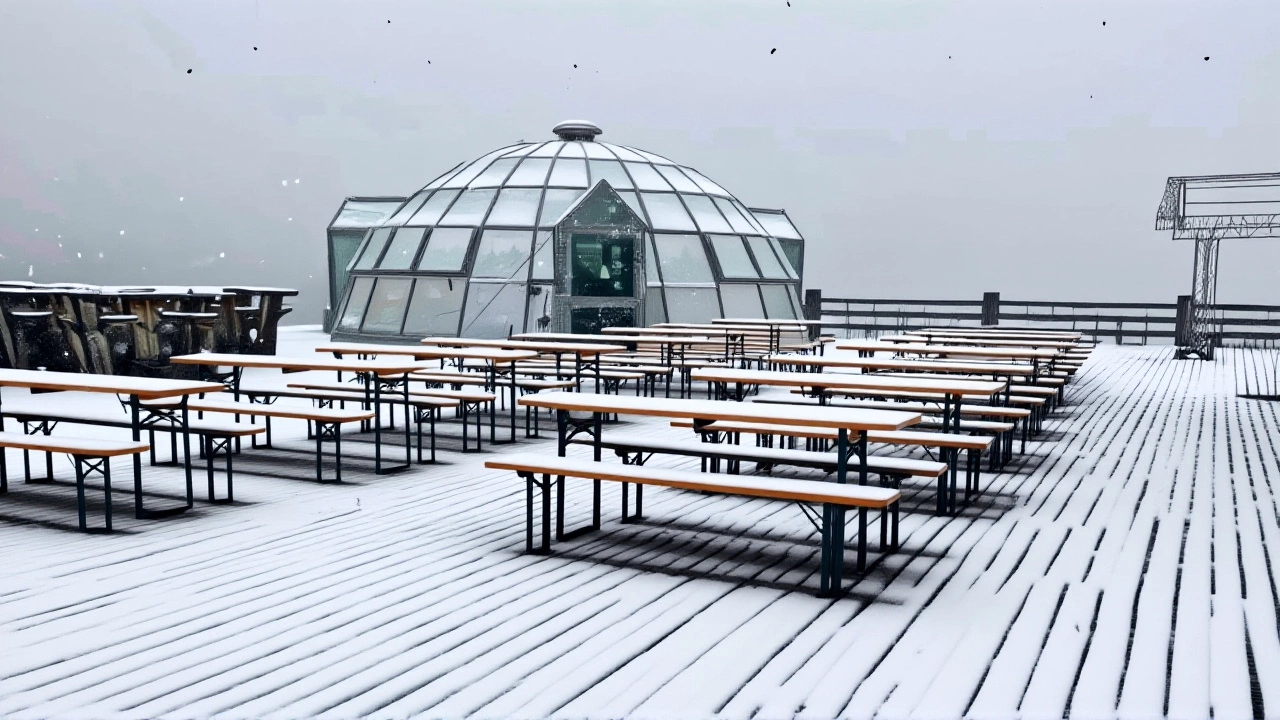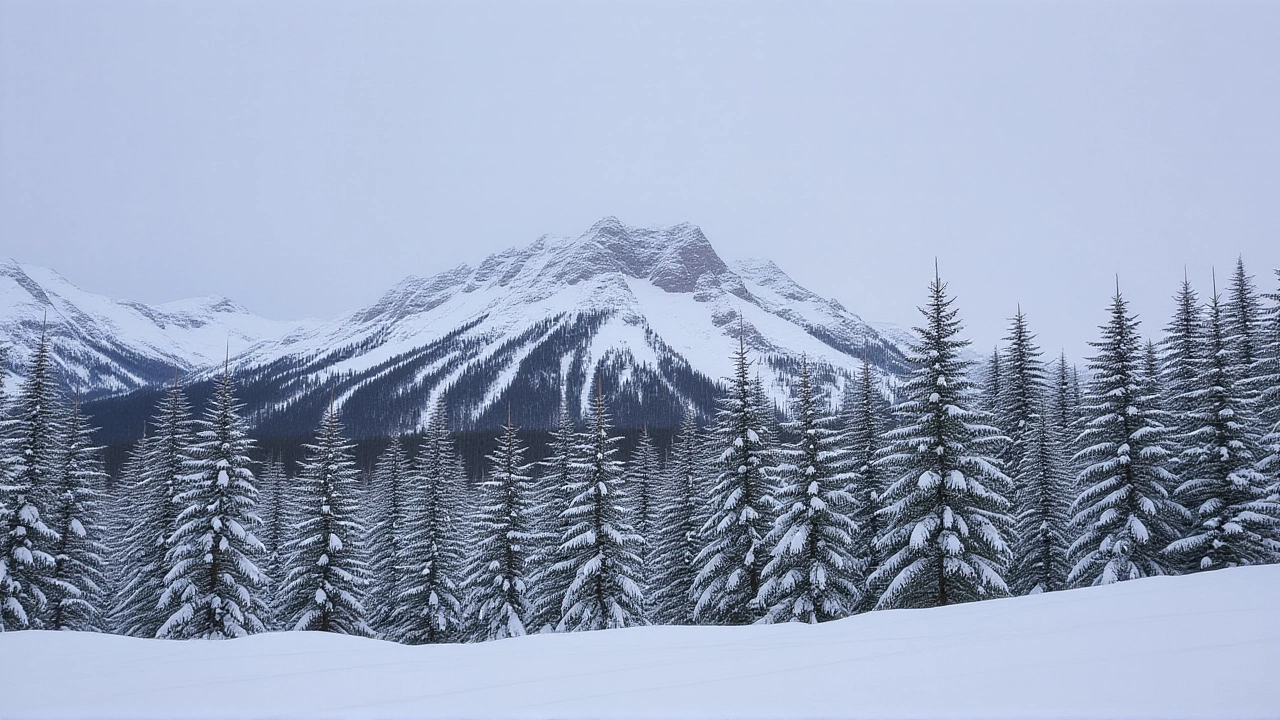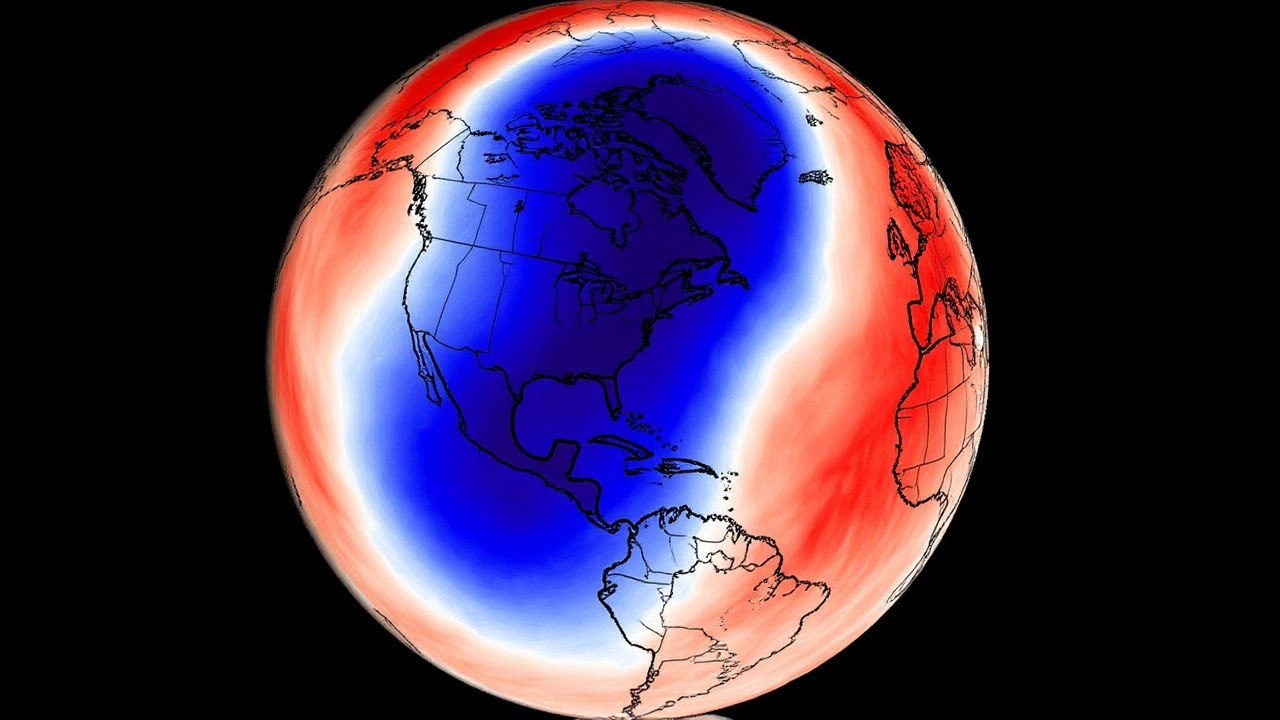When a frigid tide from the north pours into the heart of America, everybody feels it – from power‑plant operators to the crowd waiting on the National Mall. That’s exactly what’s happening now: a massive Arctic blast set to push temperatures 25‑35 °F below average across most of the continent, jeopardizing the safety of roughly 81 million people.
The cold wave, forecast by the National Weather Service on Jan 15, 2025, will begin spilling southward Saturday, Jan 19, and linger for at least a week. By Sunday, millions will be bracing for sub‑zero Fahrenheit readings, and the chill will only grow as the high‑pressure ridge pushes deeper into the United States.
What’s Driving This Arctic Blast?
At the core of the event is a polar‑vortex‑related disturbance that’s been gathering steam over the North Pacific and Alaska. A powerful blocking high is anchoring the jet stream, forcing a deep trough of Arctic air to surge southward through Canada. The result? Surface pressures topping 1050 mb in parts of southern Canada and the northern High Plains – a textbook sign that dense, cold air is depressing the atmosphere.
Matt Taylor, senior meteorologist at The Weather Channel explains, “When you see pressures climb that high, you know the cold is not just a passing breeze – it’s a heavyweight champion that’s going to stay in the ring for days.”
The stratospheric polar vortex itself remains relatively strong, according to GEFSv12 model runs from Jan 5, which means the classic “sudden stratospheric warming” that often tips the scales isn’t the main culprit this time. Instead, it’s a slow‑moving, well‑organized wave that’s keeping the Arctic air locked in place.
How the Cold Will Unfold Across the U.S.
From the Upper Midwest to the Gulf Coast, the temperature departures will be dramatic. In the Upper Midwest and Plains, wind chills could dip to –30 °F or even –40 °F, while the Southern Plains, Ohio Valley, and Mid‑Atlantic may see sub‑zero wind chills for the first time in recorded history.
Here’s a quick look at the expected highs and lows:
- Chicago: high 12 °F, wind chill –30 °F
- Dallas: low 9 °F, wind chill –10 °F
- Washington, D.C.: high 24 °F, wind chill teens (still feels like winter night)
Even the Gulf Coast, usually a bastion of mild winter weather, isn’t safe. Pat Calvin, meteorologist at KHOU 11 warned southeast Texas residents that “the Arctic air is bottled up now, but it’s about to burst out, bringing 20‑plus degree drops that will feel like a freezer door swung open.”
Impact on Inauguration Day and Critical Infrastructure
President‑elect Donald Trump, President‑elect is slated to take the oath on Jan 20, 2025, amid a forecast that the National Mall will sit in the mid‑20s °F with wind chills in the teens – a stark contrast to the typically crisp but mild January ceremonies of recent years.
Beyond the ceremonial chill, utilities are already bracing for spikes in demand. The Western Interconnection expects a 15 % surge in electricity usage in the Pacific Northwest, while the Eastern Interconnection could see similar pressure on generators already strained by previous cold snaps.
Agricultural concerns are also front‑and‑center. Crop‑frost warnings have been issued from Iowa to Georgia, and even greenhouse growers in California fear that the sudden cold snap could damage delicate seedlings if protective measures aren’t quickly deployed.

Expert Reactions and Safety Advice
Public‑health officials are urging vulnerable populations – seniors, infants, and those with pre‑existing conditions – to limit outdoor exposure. The CDC recommends keeping indoor temperatures no lower than 68 °F and checking on neighbors who may lack adequate heating.
Energy experts suggest that homeowners prep by sealing drafts, insulating pipes, and keeping a backup heat source handy. “Think of your home as a thermos,” says energy analyst Jenna Liu of Energy Insight Group. “If you can minimize the heat that escapes, the furnace won’t have to work overtime, and you’ll reduce the risk of a power outage.”
Transportation departments are also on alert. Snow‑and‑ice storms could hit the South and Southeast by mid‑week, potentially grounding flights and causing hazardous road conditions. Drivers are being told to keep emergency kits, chains, and to monitor local forecasts closely.
Looking Ahead: Climate Context and Future Outlook
While this Arctic blast is shaping up to be the coldest of the 2024/2025 winter so far, meteorologists caution that it isn’t likely to shatter long‑standing temperature records. “Mid‑January is a tough month to set new lows because the baseline is already low,” notes Taylor. “Plus, the warming trend we’re seeing globally means that extreme cold events are becoming less frequent, even if they’re still severe enough to cause real damage.”
Scientists also flag that a nascent stratospheric vortex is forming over the North Pole, which could influence winter 2025/2026 patterns across North America and Europe. If the vortex weakens later this season, we might see another wave of cold later in the year, but that’s still a moving target.
For now, the priority is clear: stay warm, stay connected, and keep an eye on the evolving forecast.

Key Facts
- Event: Arctic blast of January 2025
- Start date: Saturday, Jan 19, 2025
- Population affected: ~81 million Americans
- Record high surface pressure: >1050 mb across southern Canada
- Inauguration Day forecast: mid‑20s °F with wind chills in the teens in Washington, D.C.
Frequently Asked Questions
How will the cold affect power grids in the Midwest?
Utilities expect a 15 % jump in electricity demand as heaters kick in. Grid operators are pre‑positioning reserve generation and urging customers to conserve energy during peak evening hours to avoid rolling blackouts.
What safety steps should seniors take during the Arctic blast?
Stay indoors as much as possible, keep home thermostats at 68 °F, wear layers—including a hat and gloves—even inside, and check on neighbors who may rely on others for heating assistance.
Will the cold snap delay the presidential inauguration?
The ceremony is still slated for Jan 20. Security and event planners have activated heating tents and indoor contingency spaces, so the oath‑taking should proceed despite the low temperatures.
Is this Arctic blast linked to climate change?
While the vortex itself is a natural phenomenon, scientists say the overall warming trend can alter jet‑stream patterns, sometimes allowing cold air to dip farther south. However, this specific event isn’t directly caused by climate change, according to current model data.
What should travelers to the Southeast expect?
Snow and ice are possible mid‑week, especially in Alabama and Georgia. Drivers should keep chains, fill their gas tanks, and stay tuned to local weather alerts for road‑closure updates.
